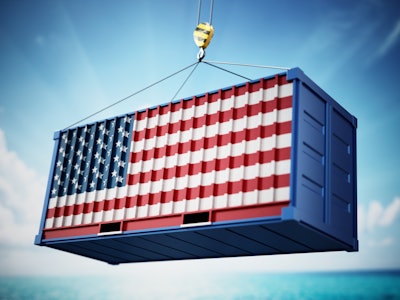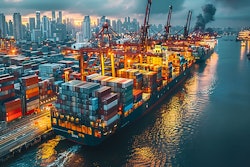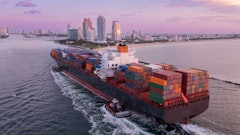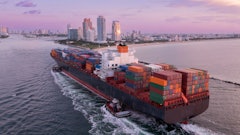
President Donald Trump has already made plenty of headlines since taking up his second term in the White House, including with the announcement of numerous new tariffs on imports.
The 47th United States President issued three executive orders on Feb 1, just days after his inauguration, which directed the United States to impose an additional 25% ad valorem rate of duty on imports from Canada and Mexico, as well as 10% on imports from China.
Excluding Canadian energy resources exports, which instead will be hit with a 10% tariff, the tariffs have been applied to all imports either entered for consumption or withdrawn from warehouse for consumption on or after 12:01am EST on Feb. 4.
President Trump also told reporters on Feb. 8 that a 25% tariff on all American steel and aluminum imports was coming into effect across the United States.
Here’s how President Trump’s tariff mandates could affect the world’s shipping industry.
Reaction to President Trump’s tariff announcements
Mexico, Canada and China were all quick to react to President Trump’s announcement of tariffs on imports.
Mexican President Claudia Sheinbaum said her country would vow for resilience against the measures, while a senior government official in Canada said that their country would challenge the decision by taking legal action through the necessary international bodies.
China has also said it would challenge the tariffs, where according to the country’s finance ministry, as reported on by Geopolitical Intelligence Services, Beijing was moving to place levies of 15% on American coal and liquefied natural gas, as well as levies of 10% on crude oil, certain vehicles and farm equipment.
President Trump told reporters in the Oval Office, "This is a big deal, the beginning of making America rich again. Our nation requires steel and aluminum to be made in America, not in foreign lands.”
Francois-Phillippe Champagne, the Minister of Innovation in Canada, stated that the tariffs were "totally unjustified" though, before adding in a post on X, "Canadian steel and aluminum support key industries in the U.S., from defense, shipbuilding and auto. We will continue to stand up for Canada, our workers, and our industries."
How might President Trump’s second term affect the world’s shipping sector?
Just ahead of President Trump taking office for the second time, supply chain experts believed that the shipping industry was prepared for the new tariffs, that those involved in shipping containers across continents should be paying particular attention to the American sanction announcements.
It will take time to see what the true impact will be. However, various sources have looked back on President Trump’s first term to get an idea of what could be expected.
For example, when President Trump was last in the White House, he had a noticeable effect on both spot container freight rates and import timing. Cargoes were pulled forward in the second half of 2018 by importers as they looked to beat tariff deadlines, which resulted in higher spot rates temporarily before affecting rates in 2019 because of inventory overhang. Could repeat results be seen across 2025 and 2026?
Experts expect to see frontloading like we have never seen before in 2025.
Meanwhile, increased tariffs may cause disruption to shipping volumes and global supply chains, if trade policies introduced during President Trump’s first term is anything to go by. Shipping demand and routes could be affected due to trade uncertainty too, though increased investment in ports and inland waterways across the United States could improve efficiency for domestic and international trade alike.














![Pros To Know 2026 [color]](https://img.sdcexec.com/mindful/acbm/workspaces/default/uploads/2025/08/prostoknow-2026-color.mduFvhpgMk.png?ar=16%3A9&auto=format%2Ccompress&bg=fff&fill-color=fff&fit=fill&h=135&q=70&w=240)


